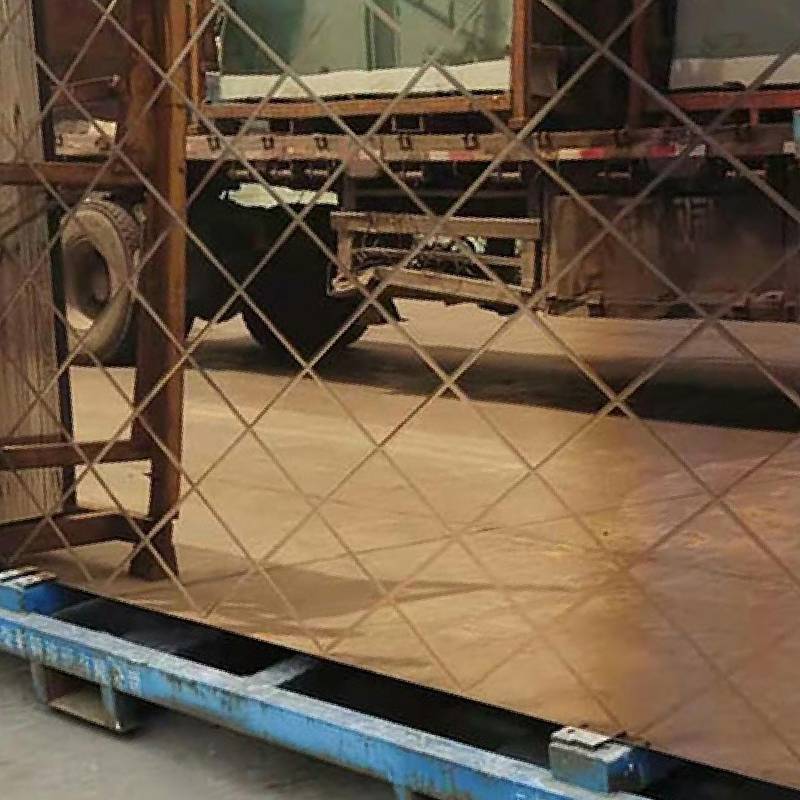The Sheet Glass Manufacturing Process An Overview
Sheet glass, commonly used in windows, doors, and various architectural applications, boasts a unique manufacturing process that combines both art and science. This process has evolved over centuries, adapting to technological advancements and changing market demands. Today, the production of sheet glass involves several critical steps, starting from raw material preparation to the final quality checks.
At the core of sheet glass production are its raw materials silica sand, soda ash, and limestone. Silica sand, constituting approximately 70-75% of the composition, serves as the primary source of silicon dioxide. Soda ash acts as a flux, lowering the melting point of silica to facilitate its transformation into glass. Limestone is added to improve durability and chemical resistance. Other additives may also be included to achieve specific characteristics like color, clarity, or enhanced thermal properties.
Once the raw materials are sourced, they are carefully weighed and mixed in precise proportions. This mixture is known as the batch. The consistency of this batch is critical, as it directly influences the quality of the final product. After mixing, the batch is transferred to a furnace, where it is heated to temperatures exceeding 1,700 degrees Celsius (over 3,100 degrees Fahrenheit). At this intense heat, the components melt and react to form molten glass.
The next stage in the sheet glass manufacturing process is forming. The molten glass is typically shaped using two predominant methods float glass and sheet glass processes. In the float glass process, the molten glass is poured onto a bed of molten tin, where it spreads out evenly to create flat, uniform sheets. This method is favored for its ability to produce large panes of glass with excellent surface quality and clarity.
Alternatively, the sheet glass process, which is less common today, involves drawing glass from a molten pool using various techniques, including the manual drawing method or the more advanced machine processes. In manual drawing, a worker stretches the molten glass into sheets, a skill that takes years to master. Modern machinery, known as glass float lines, have largely replaced manual methods, offering higher production speeds and improved consistency.
sheet glass manufacturing process
After forming, the glass continues along the manufacturing line for annealing. This critical heating and cooling process allows internal stresses to be relieved. Glass that is cooled too quickly can develop stresses that may lead to shattering or other defects. The annealing lehr, a specially designed furnace, enables the glass to cool gradually, ensuring uniform temperatures throughout the material.
Following annealing, the sheets of glass undergo inspection and quality control. Various tests are conducted to assess clarity, thickness, and uniformity. Any defects, such as bubbles or waves, are identified and the affected sections are marked or discarded. The quality control process is essential, as modern applications of glass demand high standards for durability and aesthetics.
Once quality assurance is completed, the glass is cut to size. This can involve scoring and snapping the sheets using diamond-tipped tools or automated cutting machines that enhance precision and reduce waste. The cut pieces are then washed and packaged for transportation. Proper packaging is vital to prevent damage during shipping, ensuring that the glass reaches its destination intact.
The final step in the sheet glass manufacturing process involves additional treatments if required. This could include coating for enhanced thermal insulation, tinting for UV protection, or lamination for added strength. These treatments allow manufacturers to customize the glass to meet specific client needs, thus expanding its range of applications.
In conclusion, the manufacture of sheet glass is a sophisticated process that blends traditional techniques with modern technology. From sourcing raw materials to final quality checks, each step is crucial to creating high-quality sheet glass suitable for diverse applications. As technologies advance, it is likely that the processes involved in sheet glass manufacturing will continue to evolve, further enhancing its properties and applications in the modern world. As such, the art and science of sheet glass manufacture will remain integral to architectural design and construction, reflecting innovation and quality in every pane.
 Afrikaans
Afrikaans  Albanian
Albanian  Amharic
Amharic  Arabic
Arabic  Armenian
Armenian  Azerbaijani
Azerbaijani  Basque
Basque  Belarusian
Belarusian  Bengali
Bengali  Bosnian
Bosnian  Bulgarian
Bulgarian  Catalan
Catalan  Cebuano
Cebuano  Corsican
Corsican  Croatian
Croatian  Czech
Czech  Danish
Danish  Dutch
Dutch  English
English  Esperanto
Esperanto  Estonian
Estonian  Finnish
Finnish  French
French  Frisian
Frisian  Galician
Galician  Georgian
Georgian  German
German  Greek
Greek  Gujarati
Gujarati  Haitian Creole
Haitian Creole  hausa
hausa  hawaiian
hawaiian  Hebrew
Hebrew  Hindi
Hindi  Miao
Miao  Hungarian
Hungarian  Icelandic
Icelandic  igbo
igbo  Indonesian
Indonesian  irish
irish  Italian
Italian  Japanese
Japanese  Javanese
Javanese  Kannada
Kannada  kazakh
kazakh  Khmer
Khmer  Rwandese
Rwandese  Korean
Korean  Kurdish
Kurdish  Kyrgyz
Kyrgyz  Lao
Lao  Latin
Latin  Latvian
Latvian  Lithuanian
Lithuanian  Luxembourgish
Luxembourgish  Macedonian
Macedonian  Malgashi
Malgashi  Malay
Malay  Malayalam
Malayalam  Maltese
Maltese  Maori
Maori  Marathi
Marathi  Mongolian
Mongolian  Myanmar
Myanmar  Nepali
Nepali  Norwegian
Norwegian  Norwegian
Norwegian  Occitan
Occitan  Pashto
Pashto  Persian
Persian  Polish
Polish  Portuguese
Portuguese  Punjabi
Punjabi  Romanian
Romanian  Russian
Russian  Samoan
Samoan  Scottish Gaelic
Scottish Gaelic  Serbian
Serbian  Sesotho
Sesotho  Shona
Shona  Sindhi
Sindhi  Sinhala
Sinhala  Slovak
Slovak  Slovenian
Slovenian  Somali
Somali  Spanish
Spanish  Sundanese
Sundanese  Swahili
Swahili  Swedish
Swedish  Tagalog
Tagalog  Tajik
Tajik  Tamil
Tamil  Tatar
Tatar  Telugu
Telugu  Thai
Thai  Turkish
Turkish  Turkmen
Turkmen  Ukrainian
Ukrainian  Urdu
Urdu  Uighur
Uighur  Uzbek
Uzbek  Vietnamese
Vietnamese  Welsh
Welsh  Bantu
Bantu  Yiddish
Yiddish  Yoruba
Yoruba  Zulu
Zulu 

